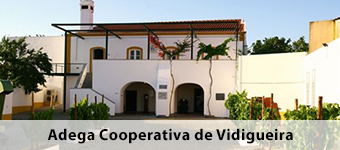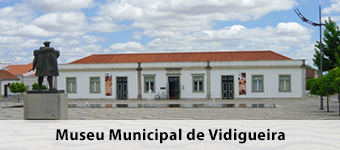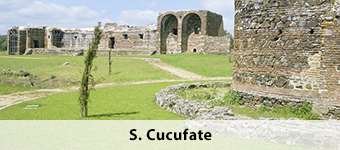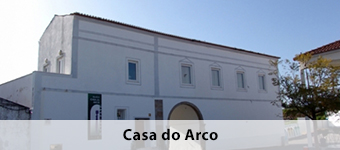Heritage Baixo Alentejo
Aljustrel
Aljustrel is a village of the district of Beja and is county seat of 4 parishes Aljustrel and Rio mills; Ervidel; Messingham; St. John Negrilhos. The municipality is limited by Ferreira do Alentejo the north by Beja and east, Castro Verde in the south by southwest Ourique and Santiago do Cacém west.
- The Ethnographic Museum of Messejana presents an interesting estate, including a room that recreates the space of Victor Soares, son of Messajana land; the pitchers used by Francisco Manuel Bartholomew, the last water carrier of the earth; also presents the reconstitution of various areas of the typically Alentejo house, including kitchens, utility room, bedroom and sewing the house. This museum is open every day by appointment.
- Created as an institution in 1999, the Municipal Museum of Aljustrel offers two main collections and a slightly smaller. One of the main collections is the Ethnography related to the rural world, presented the agricultural implements to work the land, beekeeping, milling, storage and processing of cereals and materials related to the production of wine and olive oil. Also featuring various objects of day-to-day, which allowed the reconstitution of a bedroom and a kitchen of a rural house. The other collection with a larger size is archeology, which exposes various materials collected from interventions in the region and findings. The museum acquired an estate that belonged to the old Museum of the Mine through the protocol of a mining company, Pirites Alentejanas, this estate consists of materials from Prehistory to the Middle Ages, and especially the Roman period. The smallest collection is from the former Office Sealer Mayor of Aljustrel, which will open doors to a new core of Metrology.
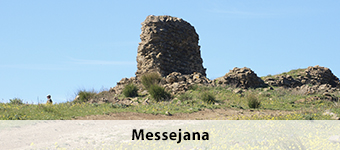
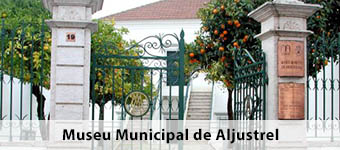
Almodôvar
Almodovar is a town of Beja district and the seat of the municipality of 6 parishes Aldeia dos Fernandes; Almodovar and Grace of Standards; Rosary; St. Barnabas; Santa Clara-a-Nova and Gomes Aires; Holy Cross. The municipality is bordered on the north by Castro Verde, to the west by Mértola, southeast of Alcoutim Loulé by the south by southwest Silves and Ourique west and northwest.
- The Fair of Arts and Culture of Almodovar takes place annually.
- Once Municipality Hall, the Museum Severo Portela is currently dedicated to Severo Portela who donated part of his artistic estate, with paintings, drawings, sculptures, books and diplomas. Reportedly, this building housed Sebastian, during his visit to Almodovar while traveling through the Alentejo and Algarve.
- As architectural heritage with a great value and historical interest there is the Mother Church, the Church of Mercy, the Convent of Nossa Senhora da Conceição, the Clock Tower and the Municipal Market, which not only tell their story, but have also the history of its people.
- A starting point to understand the real history of extensive physical territory between Spain and Portugal and the linguistic territory, the Museum of Almodovar Southwest writing is the space that offers answers, always changing as writing, this shows the evolution of spelling and written knowledge through teaching, functional and aesthetic form. In order to respond to the need to protect, study and disseminate the writing, the Municipality of Almodovar opened this space, since this region is one of the largest concentrations of writing epigraphs. It is open from 10: 00h – 13: 00h and 14: 00h – 18: 00h; ending the holidays.
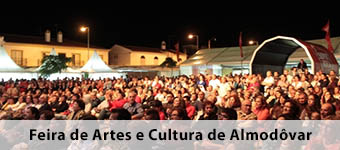
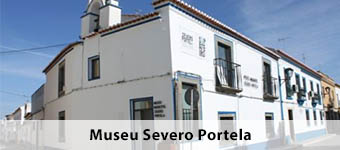
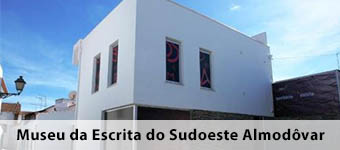
Alvito
Alvito is a village in the district of Beja and as county seat, generates two parishes, Alvito and Vila Nova da Baronia. Limited by the Alentejo north Viana, for Cuba this in Ferreira do Alentejo in the south and west and on Alcacer do Sal also west.
- Castle of Alvito – atual Pousada
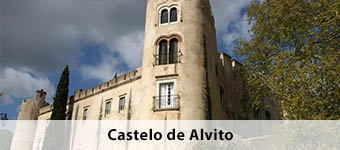
Barrancos
Barrancos is a borderland town of Beja district, one of the six municipalities consisting of only one parish, and is limited to the north and east by Castilian land Oliva de la Frontera and Valencia del Mombuey (province of Badajoz) and Encinasola (Huelva ), south and west by Moura and northwest of Mourao.
- A former mansion of the nineteenth century, which has retained its original design, the Municipal Museum of Archaeology and Ethnography of Barrancos is installed here. This consists of three rooms in which two are dedicated to permanent exhibitions and one used for temporary exhibitions. The main room is devoted to archeology, can be found several by and Paleolithic objects to the eighteenth century, in another room of permanent exhibition is the representation of the former Office Municipal Medical, the late nineteenth and mid-twentieth century, in which they are exposed furniture and instruments of the different areas of medicine, once used by municipal Barrancos doctors. This museum is open from October to March, from Tuesday to Friday – from 10am to 12pm and from 13h to 16h, Saturdays, Sundays and public holidays – from 13h to 16h; April to September from Tuesday to Friday: 10am to 12pm and from 13h.30 to 17h, Saturdays, Sundays and Bank Holidays – from 13h.30 to 17h. Closed doors on Monday, Tuesday is holiday on Monday, holidays 1 January and 25 December.
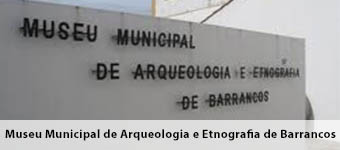
Beja
Beja is a city, district headquarters and the headquarters of the Roman Catholic Diocese of Beja. It contains 12 parishes, one of the largest municipalities: Albernoa and Trinidad; Baleizão; Beja (Salvador and Feira); Beja (Santiago Major and St. John the Baptist); Beringel; Gorda; Our Lady of the Snows; Salvada and Quintos; Santa Clara de Louredo; Santa Victoria and Mombeja; Matthias; Trigaches and are Brissos. The city of Beja is bordered to the north by Cuba and Vidigueira, by Serpa east by Mértola and Castro Verde in the south and west by Aljustrel and Ferreira do Alentejo.
- Castle of Beja
- Promoting wine tourism, the wines of the Beja region, the entities are: Casa de Santa Vitória SA Herdade da Malhada Albernoa; Henry Grape, Wine, Lda Herdade da Mingorra Trinity.; Malhadinha Nova; Herdade dos Grous; Herdade Paço do Conde, Soc. Agr. Encosta do Guadiana and the Agricultural Society of New Hill and Figueirinha, Lda.
- Outside the medieval walls, near the road that links the Beja Mértola, stands the St. Francis Convent, also known as Chapel of the Tombs, being founded in the thirteenth century and over the centuries has undergone changes, quite visible in the elements different styles of architecture. From the Gothic period still reserves the Hall of Tombs, a family funeral chapel of the fifteenth century. This is considered as one of the most interesting Gothic monuments of Portugal, for many authors. This chapel is classified as a Public Interest and currently the Convent of St. Francis belongs to the network Pousadas de Portugal.
- Founded in 2005, the Beja Seminary Museum opened as the protocol between the Heritage Department Historical and Artistic of Beja Diocese and Rector of the Beja Seminary, part of the Museum Network of Beja Diocese. Following an exhibition of sacred art present in Alentejo, Beja Seminar gathered strength to create a museum pole. And in 1990, it incorporated diverse collections, from images and liturgical vessels, the parts offered by private individuals, including parts of the convents of Santa Clara, the Conception and Our Lady of Hope, as the set of testimonies of popular religiosity Transtagana. In 2002, work began on the creation of an area “Blow Room ‘which aimed at presenting some collections. Open from Monday to Friday, 09h00 to 12h30 / 14h30 to 17h30, Saturdays, Sundays and holidays by appointment.
- Founded in 1892, under the protection of Don Antonio Xavier de Sousa Monteiro, by Monsignor Amadeu Ruas, the Beja Episcopal Museum welcomes art works of the past convents and monasteries of Beja, painting collections, sculpture, decorative arts. It was based in the building of the former Bishop’s Palace, also called the College of St. Francis Xavier. In 19911, its collection originated the Regional Museum, now Museum Rainha D. Leonor. And in 2004, it was restored in the Church of Our Lady of Joy, as one of the poles of Museology Diocesan Network. It is open from Wednesday to Sunday from 10h00 to 12h30 and from 14h30 to 18h00. Closing on Monday and Tuesday, holidays January 1, Easter Sunday, December 25.
- The Museum Jorge Vieira presents part of the estate of the sculptor Jorge Vieira, donated to the Municipality of Beja in 1994, this is exposed in the museum since 1995. Since sets of sculptures, models and drawings of his own, that marked its course of Portuguese art , throughout the twentieth century. The September 16, 1922 born Jorge Ricardo da Conceição Vieira in Lisbon; between the years 1944 and 1953, it attends the School of Fine Arts of Lisbon, starting in architecture and then moving to sculpture, Jorge Vieira was a student of Simões de Almeida and Leopoldo de Almeida and worked in Antonio Duarte ateliers, Francisco Franco and Antonio Rocha. In 1953, he competed for the International Sculpture Competition, the Institute of Contemporary Arts, London, with the sculpture of “The Unknown Political Prisoner”. Year later, he settled in London to get to attend the Slade School of Fine Arts, being able to work under the guidance of Henry Moore, F. E. Mc’William and Reg Butler. Returning to Portugal in 1956, Jorge Vieira returns to his teaching activity and performing several exhibitions both in Portugal and abroad. Your connection with Beja was strengthening and it opened its monument “The Unknown Political Prisoner” at the roundabout access to Beja. With the close relationship, so the sculptor donates part of his estate. In 1998, Jorge Vieira dies in Estremoz. Jorge Vieira Museum opens Tuesday to Sunday from door 09h00-13h00 and 14h00-18h00, ending the Monday, January 1, May 1 and December 25.
- The Botanical Museum of Agrarian School of Beja is a scientific culture center that has several temporary exhibitions that demonstrate the age-old relationship between man and plants, always aiming at the conservation, study and dissemination of objects and knowledge obtained from collection and economic botany studies and ethnobotany.
- Beja Regional Museum also known as Queen Leonor Museum is in Convent Nossa Sra. Da Conceição from the year 1927, being expanded with collections coming from other monasteries and palaces in the region. Highlighted in its collection is the core of painting with works by Portuguese masters, Spanish and Dutch, the lapidary section, the collection of Goldsmiths, and the section of Archeology, focused on the Roman period; this core also gives focus to the frameset of the Portuguese primitive school, including the Ecce Homo, the fifteenth century; S. Vicente of the sixteenth century, the school of the Master of Sardoal; the Virgin of the Rose of the sixteenth century, the Portuguese painter Francisco de Campos; and a group of four panels of the sixteenth century, the Portuguese painter António Nogueira representing the Visitation of St. Elizabeth, the Descent from the Cross, the Resurrection and the Ascension. This museum is open Tuesday to Sunday from 9h30 to 12h30 and from 14h00 to 17h15; closing on Mondays and holidays.
- In Beja Regional Museum is the Visigoth collection, consisting of more important parts of the Visigoth forum that promotes Beja as “Capital of Art Visigothic in Portugal”, a collapsed estate over several years by many experts in that highlights the archaeologist Abel Viana. This core is installed in the Church of Santo Amaro, since this has undergone several changes and obtained several Visigoth capitals. The collection consists of several parts which highlights a set that lists the late-Roman world of the fourth and fifth centuries and centuries later, that already have characteristics that with formal and decorative changes that led to the definition of Visigoth here highlights If the sword of a warrior, found in the early twentieth century in a grave in Beja witness art and jewelery of the time an apogee period; Also represented here is a funerary cult composed of two tombstones funeral, one that would be reused on the other side, the Islamic period.
- Integrating a set of archaeological structures that have some moments in the history of the city of Beja and how it evolved over the centuries, the Museum Centre of Sembrano Street presents the remains of archaeological excavations carried out in the 80s and 90s of the twentieth century, They extend from Prehistory to Contemporary Age. Some ceramic fragments confirm the occupation of Beja from the Chalcolithic period or Copper Age; But is the Iron Age emerging elements of a wall connected with clay stone, surrounding the village at that time. This construction is still observable through a large grid-shaped structure, encompassing almost the whole of the floor of the core. Also open to visitors are the structures of the Roman period, including a small spa, part of a Roman dwelling or establishment with commercial exploitation. Among other exhibits, is a permanent, which summarizes the history of the city; other temporary demonstrate themes of archeology and historical heritage of the region. Open Tuesday to Sunday from 09h00 – 13h00 and 14h00 – 18h00; closed on Monday, January 1, May 1 and December 25.
- The Villa Romana Pisões was discovered accidentally in 1967 while stemmed agricultural work. Shortly after, they begin to archaeological excavations which have confirmed their Roman occupation between the first century and IV AD, part of the villa was used as residence owners, this was more than forty rooms arranged around a central outdoor courtyard, known as peristyle, however, are the mosaics of this villa that add a plastic wealth, with various decorative and iconographic styles; joining the spa building and the wall of a Roman dam, which supplied water to farm and domestic life, these are the most enriching elements of the villa.
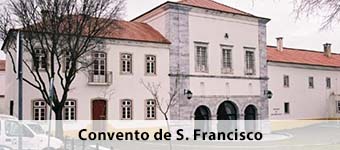
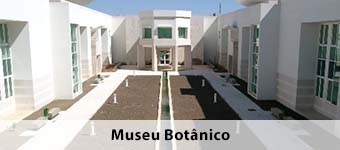
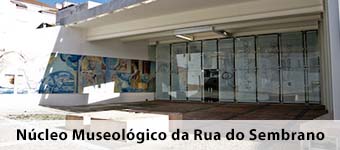
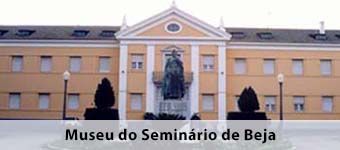
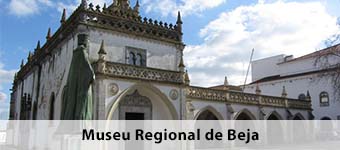
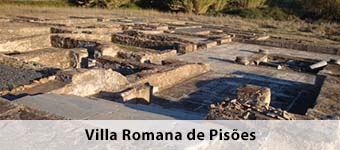
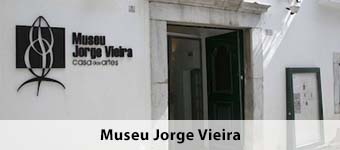
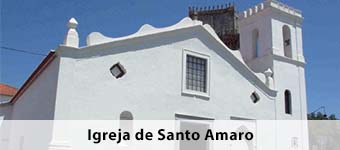
Castro Verde
Castro Verde is a village in the district of Beja, as county seat manages 4 parishes, Castro Verde and Casével; Appetizer; Santa Barbara Standards; São Marcos da Ataboeira. Castro Verde is in a region where its territory is recognized as White Field and much of this territory is within the area of Natura 2000, the European Union, also represented by a Special Protection Area for species of steppe birds risk of extinction, including the great bustard and lesser kestrel. The boundaries of the Castro Verde municipality are brands, the roadside with a badge-logo council, which states “A window on the plain.”
- Opened in 2004, the Lucerne Museum has a unique collection of small lamps from the Roman era and was discovered in 1994 in Santa Barbara of Standards. Collected thousands small lamps during archaeological excavations, were presented the public with a single set of these lighting fixtures. The museum also features a number of temporary thematic exhibitions. Requiring to be a small lamps studies center seeks a partnership between Cortiçol – Cooperative Information and Culture of Castro Verde and the municipality of Castro Verde. Open from Tuesday to Friday from 10.00-12.30 and 14h00-17h30 and on weekends Weekend of 14h00-17h30; closing on Mondays and holidays.
- The Museum of Rural Affairs plays an important role in safeguarding the intangible heritage of the White Field, creating a space for dialogue between the tangible and intangible heritage, through the study of cultural and social specificity of this region. This museum is divided into three exhibition areas: temporary exhibitions are some agricultural tools and objects representative of the plain rurality; another zone of semi-permanent exhibition with a blacksmith shop, a collection of the last Abegão Castro Verde and agricultural implements; the other area is focused to core orality, against the backdrop of Feira de Castro and viola Campaniça, the respective manifestations of the intangible heritage of this region. This museum is open from 10.00-12.30 and 14h00-20h00, closing on Monday and Tuesday morning.
- An imposing temple that marks the urban center of Castro Verde Village is the Royal Basilica of Castro Verde, with a high altar coated gilded and the interior covered with tile panels representing the Battle of Ourique, a related moment with the foundation of the nation. The title of this basilica was granted by King John V to honor the king’s victory D. Afonso Henriques on the five kings Moors. This basilica is the treasury of the Basilica a small museum of sacred art, composed of religious ornaments of the county, including the head-reliquary of St. Fabião (Casével) and the Custody of the Basilica itself. This treasure is integrated into the network of religious art centers of the Heritage Department of Historical and Artistic Beja Diocese. During the summer, the Royal Basilica of Castro Verde is open from 10h-12h30 and 14h-18h and during the winter open from 9.30-12.30 and 14h-17h30. Closed on Monday, Tuesday and holidays from January 1, Easter and December 25.
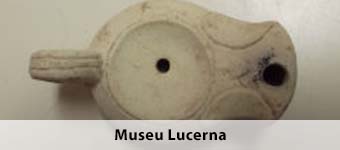
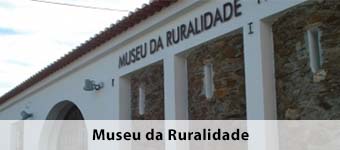
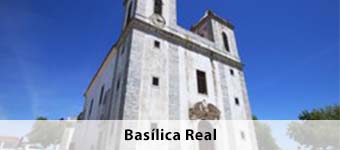
Cuba
Cuba is a town of Beja district and is home to the city of 4 parishes, Cuba; Faro do Alentejo; Alva; Vila Ruiva. The municipality is limited by Portel the north by east Vidigueira, Beja by the south by Ferreira do Alentejo the southwest, west Alvito and Viana do Alentejo northwest.
- In order to promote ecotourism in the region, there is the Herdade do Rocim and Quinta da Piebald.
- The Insectozoo or Museum of Social Insects is a small space dedicated to social insects, including ants, termites, bees and wasps, which aims at environmental education, where each insect has a regulatory role of ecosystems where it is. Your visit requires marking.
- The Museum of Sacred Art and Archaeology of Alva has several collections of sacred art and archeology, with pieces of prehistoric, Roman and medieval period. This is only open by appointment 48 hours in advance.
- The Treasure of the Church of St. Vincent de Cuba comes from an artistic patronage of the collection of the monastery, which belonged to the parish of Cuba, which is made by offering liturgical vessels that enriched the ambiento space; the fraternities and sororities based in this space rivaled in order works, enriching the patent land of Cuba. Opening winter by 10h30 to 14h00 and from 15h00 to 18h00, in the summer time is open from 10h30 to 14h00 and from 16h00 to 19h00, ending on Monday, Tuesday and holidays.
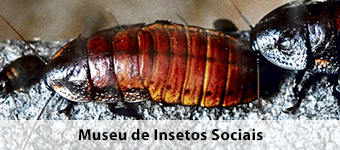
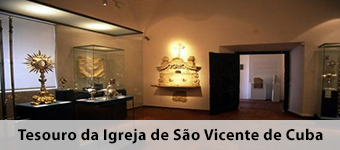
Ferreira Do Alentejo
Ferreira Do Alentejo is a village of the district of Beja and is county seat of 4 parishes, and Alfundão Peroguarda; Ferreira do Alentejo and Canhestros; Figueira of the Knights; Maynooth. This municipality is limited by Alcacer do Sal and Alvito the north by Cuba and Beja in the east, by Aljustrel the south by Santiago do Cacém southwest and west Grândola..
- The Agricultural Society Silvestre Ferreira, Lda. Promotes wine tourism in this region, through the proof of its wines, while Oliveira da Serra Lagar discloses olivoturismo through the presentation of its oil.
- The Municipal Museum of Ferreira is in Casa Agricola Jorge Ribeiro de Sousa, owned by Jorge Ribeiro de Sousa, being acquired by Ferreira Municipality in 1976. This building has had various functions, from warehouse equipment, furniture and Alentejo service carpentry and was Desportivo Municipal Council, the Scout Grouping, and from 1996 until May 2002, the Museum History Service. Shortly after, he obtained restoration work in order to accommodate the core headquarters of the Museum and of the Municipal Library. It is currently open from Tuesday to Friday from 10h to 13h and 15h to 19h and-a-week from 10h to 13h. Closing on Monday and holidays from January 1, Good Friday and Easter Sunday, May 1, 24 and 25 December.
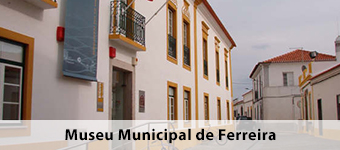
Mértola
Mértola is a borderland village of Beja district and is home to 7 parishes, Alcaria Ruiva; Pinto Court; Holy Spirit; Mértola; Santana de Cambas; St. John of Boilermakers; São Miguel do Pinheiro, San Pedro de Solis and Sao Sebastiao dos Carros. The town of Mértola is situated in an elevated position on the banks of the Guadiana river, with the upstream of the confluence of Oeiras river. The municipality of Mértola is bounded by Beja and Serpa the north by Spain to the east, Alcoutim south and west by Almodovar and Castro Verde. Despite its small size, Mértola is known as a Village Museum of Portugal, gathering five sections: Roman, Islamic, Paleochristian, Sacred Art and Blacksmith’s Forge.
- Castle of Mértola
- In 2004, the Water Museum opened its doors in the Convent of San Francisco, presented a particularity of providing irrigation through a system developed by the Moors, who considered their gardens as sacred sites to communicate with their upper bodies. Later, the Franciscan friars who recultivaram these gardens also reusing the Moorish buildings including the well, which was originally run by a donkey, holding large amounts of buckets, bringing water to the surface. Currently, a mechanical donkey is used designed by kinetic artist Christiaan Zwanikken, allowing remove the water from the well by putting the channels in the highest areas of cultivation and the use of reservoirs and dams, this essential and is brought to ground. This whole process illustrates an ancient method that was used by the people.
- Created by the Municipality of Mértola in 2004, the Museum of Mértola is composed of several cores, geographically dispersed, whose aim is to study, inventory, process, preserve and promote estate which over the years has been discovered in many archaeological and heritage interventions . Since the heritage is one of the main vectors in the development and evolution of Mértola. Heritage is something distinguishes and differentiates villages, societies and mentalities and Mértola this is much more than an asset. Open from 16 September to 30 June from 9.00 to 12.30 and 14.00 to 17h3; and from 1 July to 15 September from 9h30 to 12h30 and from 14h00 to 18h00. Closed on Monday, January 1, May 1, December 25 and on the day of realization of electoral acts.
- The core of the Paleochristian Basilica is a modern building that hides the ruins of an early Christian basilica, which opened to the cult from the century V to VIII, with 3 naves and opposing apses, and what remains of the funerary temple is currently valued by museography one that suggests the main architectural features. This museum highlights the Paleo lapidary collection composed of six dozen tombstones epigrafadas. The basilica was built on a Roman necropolis, where there were burials of the Iron Age and at a later time was also utilized as settlement of a Muslim cemetery.
- In the courtyard of the High School of Mértola was excavated, discovery and museografada an important Roman and late-Roman necropolis, which was built a small chapel in honor of St. Sebastian, the sixteenth century, giving the core of Achada de San Sebastian. This museum is a collection of artifacts, which highlights the medal-crismo the fifth century gold discovery in a child’s grave.
- The romantic core of the museum is the building of the County Hall and features the ruins of a Roman house which has been found after excavations and this site on musealization process by installing a set of architectural traces of the inhabited house. In the museum are also exposed objects found there, others of the same cultural background and other reproduction glass and sculptures from Roman times to the end of XIX century.
- So take advantage of the spaces of the old barns of the House of Braganza, an architectural and museum project features over two floors a collection of Islamic art from Portugal, its ceramic estate along with the set of artifacts decorated with glass “dry rope” , come from an oriental decorative technique, perfected in the potteries of al-Andalus, and was later diffused by the sixteenth-century tiles.
- The Church of Mercy presents the core of Christian sacred art, with exhibitions throughout the body of the church, the sacristy and other annexes, along with a collection of statues, paintings and religious ornaments, which came from different churches of the county, this posting a set of three dozen pieces carved in polychrome wood, some belonging to European schools of the sixteenth century and other parts were worked in regional workshops. The first part of the exhibition shows all the parish churches, along with a filmic vision of the annual procession of the Lord of Steps; Also exhibited are by the former Mercy and 3 monumental tablets of the old sixteenth-century altar of the parish church; presented the liturgical vessels, highlights three pieces carved silver sixteenth century a small chest / hostiário a processional cross and a monstrance.
- The workshop Forge Blacksmith is disabled, but aims to keep the memory of the professions of the past who did not resist technological change. Are exposed here, the anvil, forge with bellows, all the necessary tools to work with iron, along with an information panel that describes the location and the operations and activities of craftsmen.
- The weaving of wool rugs is one of the oldest traditional arts of the Alentejo region, where the weaving core is given training in a weavers entity keeps in mind the tradition. A decorative sense, these blankets are similar to an ornamental grammar affiliated in ancient Berber traditions and also found printed in archaeological materials. In this space is an exhibition of old instruments and tools related to the activity of wool and linen together with a textile exhibition made in the workshop and in the villages.
- The castle core occupies the site of ancient Roman buildings and a small fortified district of the Islamic era, a place that keeps in mind the din of battle. the still observable is donjon, which still stands since the time Mértola was the national headquarters of the Order of Santiago for a century. In its armory surrounded by a cross vault of warheads, which includes architectural elements collected from the village and its surroundings, a transitional period of the century VI and IX, then dominated by the decorative pieces of Visigoth style. This show has a thematic catalog and an educational panel that shows the topographic deployment of exposed objects.
- The Miner’s Cottage is the first permanent pole present at the Museum of Mina de São Domingos, which aims to be a contribution to the reconstruction of the mining village and dignity of the people and its memory thus were associated with two devices: the museological, with the creation of the Miner’s House and space collection of memories, a Documentation Centre. While the Miner’s House shows the physical reality of the monuments of a mining family, gathering objects, memories, symbols, wants to sensitize those who see this scene; the documentation center collects, archives, studies and treats of all kinds of physical documents, including photography, documentary, material, mining community.
- The museum center of Alcaria of Javazes is an exhibition space that presents everyday objects from the first half of the twentieth century, which allows relate the proximity to the people and understand the continuities and differences in occupation of this region over the centuries.
- For those going to Pulo do Lobo, near the Amendoeira da Serra, you can find the Monastery, a small white houses that once, this place was a villa or Roman mansio, being adopted by Christianity becoming a monasterium family type. The preservation of this space and hence its value turned it into a museum, with exhibits of agricultural tools, offering locals, it is also possible to approach the people, creating identity ties and promoting the preservation of the collective memory.
- The Smuggling Museum is a small museum space that aims to perpetuate the memory of the activity of smuggling in this borderland region. It is located in the former office of the Fiscal Guard Santana de Cambas, works as a local registration and recall memories of those that have made smuggling a survival activity of the people. It is open from 9:00 am to 17h30h, ending on Monday.
- A must stop river beach is the Tapada Grande.
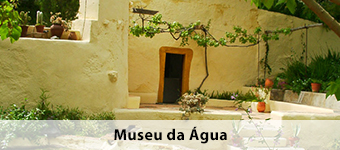
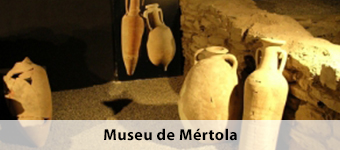
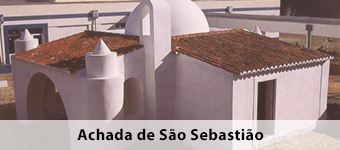
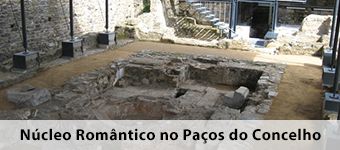
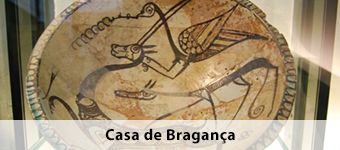
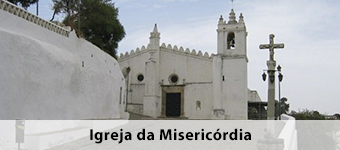
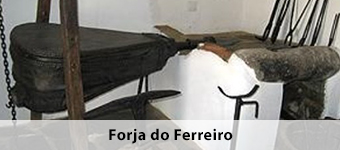
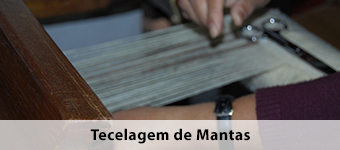
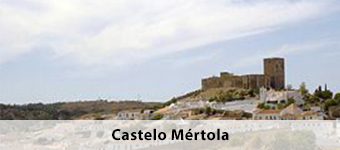
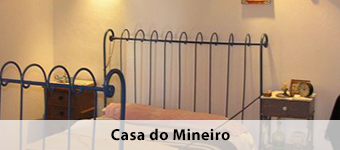
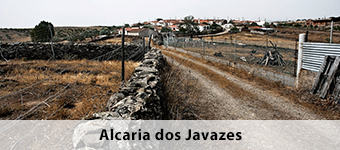
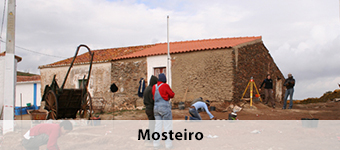
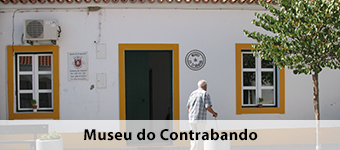
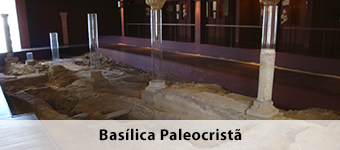
Moura
Moura is a borderland town in the district of Beja and is home to 5 parishes Amareleja; Moura (St. Augustine and St. John the Baptist) and Santo Amador; Povoa de Sao Miguel; Safara and Santo Aleixo da Restoration; Sobral da Adiça. Mourao limited by the north by Barrancos east by Spain also east and south by Serpa southwest and west by Vidigueira and Portel Reguengos de Monsaraz.
- In donjon of Moura Castle, is a small museum center which presents an important collection of daggers, pistols and swords that are part of the collection of the Municipal Museum.
- As promoting wine tourism there is the entity to Casa Agricola Santos Jorge, S.A. – Herdade dos Machados and the Society of Viticulture Courela Aleixos, Lda.
- Dating back to 1810, the Fojo sticks Lagar activity kept by the year 1941, in the Alentejo region in which the quality of azeita was very good. Today is a small museum where you can observe the bins and old olive oil manufacturing techniques, without recourse to mechanization. This mill is a rare example of mills rods of the Iberian Peninsula and the typology of this comes from the Roman mills, is classified as a Public Interest, this mill evolves from Roman oil production system for the active period of operation of a century, between 1841e 1941. With a pedagogical and complementary component was opened in 2012, the Garden of Olives, located between the CEPAAL and Lagar de Varas do Fojo. This aims to promote the development of this plant species closely related to the history of Moura. This garden is named after Miguel Hernández (1910-1942), in honor of the great Spanish poet. Open Tuesday to Sunday from 09h30às 12.30 and 14.30 to 17.30; ending Monday, January 1, Carnival Tuesday, December 25th and holidays that coincide with Monday.
- In the historic center of Moura, the Museum Alberto Gordillo – Contemporary Jewellery hosts a collection of over 200 pieces of artist Alberto Gordillo, complemented by the studio working and workspaces in its first floor. Open Tuesday-Sunday – 9h30-12.30 and from 14h30 – 17h30 and closed on Mondays and holidays to designate Jan. 1 and Dec. 25, there may be others, but is defined throughout the year by the city of Moura.
- In the ancient Church of St. Peter, the Sacred Art Museum of Moura is open to the public since 2004, making known a variety of temporary exhibitions, the fundamental coordinates of the ecclesiastical heritage of Moura and arciprestado de Moura. The exhibition “Invisible Visions” falls by a set of devotional and liturgical character, despite being taken decades of altars, they still constitute the first order references to the knowledge of the religious traditions of the Alentejo. Also in this museum are exposed mainly the jewels offered to Our Lady of Mount Carmel. It is open from Tuesday to Sunday from 10h00-13h00 and 14.30-18h00; closing on Mondays and holidays 1 January, Easter Sunday, December 25.
- The desire to create a museum in Moura dates back to 1884, when a mourenses group collected a large archaeological collection, but this wish was only realized in 1945 with the establishment of the Library-Museum with sections: Prehistory, Roman Period and Portuguese Ethnography. However, in 1993, the Municipality of Moura understood the importance of this estate and transferred it to the old common barn known as the “mouse house”. Currently contains a permanent exhibition that can be seen a significant variety of archaeological materials, from Prehistory to the eighteenth century, African ethnography, armory and sacred art. Open from Tuesday to Friday from 9:30 to 12:30 and 14:30 to 17:30, Saturday and Sunday from 10h00 to 12h00 and from 14h00 to 16h00. Closed on Monday Holidays:. January 1st, Carnaval Tuesday, December 25th and holidays that coincide with Monday
- After being reconquered in 1232, Moura continued to have a significant Muslim presence, translating the existence of the Moorish quarter, for the first kings as their homes. In 1999, it opened in this building in the core Arabic that displays “in situ” an Arab well from the fourteenth century with ceramics and candis as the hand of Fatima, an amulet in bone; Islamic arqueta and several epigraphs that stands a castle fountain, which signifies the construction of the mosque minaret.

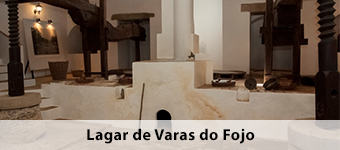
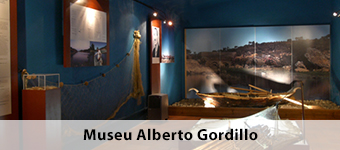
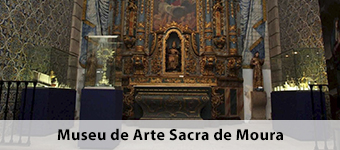
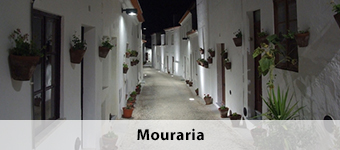
Ourique
Ourique is a town of Beja district and is home to 4 parishes, Garvão and Santa Luzia; Ourique; Panoias and Conception; Santana da Serra. The municipality is limited by Santiago do Cacém and Aljustrel in the north, east of Castro Verde and Almodôvar for Silves south and west Odemira.
- The Cola Archaeological Circuit came after successive research and research 15 sites of Ourique region, which presents its archaeological reality, these sites were also chosen for their originality and currently with its conservation status allows accessibility the visitors. Castro da Cola, is a building called Reception Centre and Circuit interpretation, which allows visitors to observe an exhibition of the monuments of this circuit and its history. Open from May 1 to September 15 from 09:30 to 12:30 and from 15:00 to 18:30, from September 16 to April 30 from 09h30 to 12h30 and from 14h00 to 17h30. Closed on Tuesday and Wednesday, more holidays from January 1, Easter Sunday and 25 December.
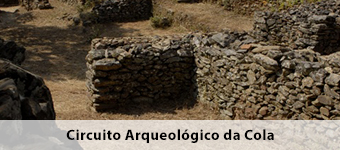
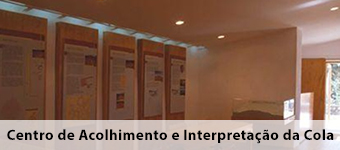
Serpa
Serpa is a borderland town in the district of Beja and is home to the city of 5 parishes Brinches; sinks; Serpa; Vila Nova de São Bento and Vargo Valley; Vila Verde Ficalho. The Serpa municipality is bordered by Vidigueira the north by northeast Moura by Spain to the east by Mértola south and west Beja.
- Castle of Serpa
- Promoting olivoturismo is the entity Risca Grande Lda.
- In the Church of St. George, the Green Village Museum Ficalho has three main sets: the archaeological, ethnographic and sacred art. The archaeological core consists of materials from the Paleolithic to the early twentieth century, coming from excavations and collections in Vila Verde region Ficalho. In the surrounding of the museum are the ruins of different periods, from late Neolithic to the fifteenth century A.D., which highlights an early Christian basilica with its baptistery and graves on the pavement of the ships and attachments. Regarding the ethnographic collection contains artefacts related to the agricultural activities of Ficalho people who over the years have fallen into disuse. Finally, the sacred art of booty brings together various objects and religious character of tools, coming from St. George and the hermitage of Our Lady of Reconciliation, along with private donations. Also in this church are paintings of the eighteenth century, the altar area and the reuse of materials Roman marble pulpit and the floor of the church. Open from 09h00 to 12h30 and from 14h00 to 17h30. Closed on weekends, weekends and holidays.
- The Clock Museum began when António Tavares d’Almeida, the main driving force of the museum, inherited from his grandparents, 3 broken pocket watches in 1972. Since this time, the collector watches sought by Portugal and the world, for its restoration and collection. In 1995, it presents its collection to the public and from this moment more than 400 damaged watches were donated to the museum, which together with the collaboration of master watchmakers are recovered and observation. In 2011, the estate increased with the opening of Polo Évora. Continuing the passion, the son of António Tavares d’Almeida, Eugénio, current director and conservator of this museum remains dedicated to that, always trying to give life to watch. Today, the museum has more than 2,300 mechanical parts, dating from 1630 to the present day, from pocket copies, pulse, room, among others. In this museum one of the exhibition halls is dedicated to the Portuguese watch and deriving thematic exhibitions. Open from Tuesday to Friday from 14h00 to 17h00, and Saturdays, Sundays and holidays from 10h00 to 12h30 and from 14h00 to 17h00. Closing on Mondays and holidays from 25 December to 1 January.
- Opened in 1987, the Ethnographic Museum of Serpa is installed in the old market hall, a building of the nineteenth century, although not keep the original design, obtained refurbishment and remodeling. This is a permanent exhibition called “Earth Crafts” that is focused on issues of occupations and crafts related to the production of essential goods to local life and the traditional technical and technological knowledge related to manufacturing. The collection of this consists of artefacts and diverse tools related to the saddler crafts, Abegão, tailor, barber, cadeireiro, carpenter, basket maker, farrier, blacksmith, tinsmith, potter, fisherman, wardrobe and shoemaker, in the world of the region, later these crafts have declined due to mechanization processes. So this museum aims to keep alive the memory of an ancient time. Open every day from 9h00 to 12h30 and from 14h00 to 17h30, ending the holidays December 25, January 1, 3rd after Easter and May 1.
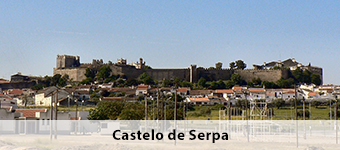
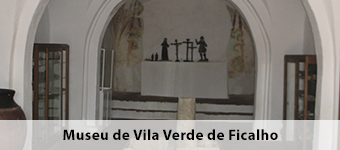
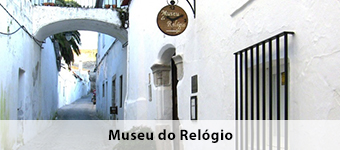
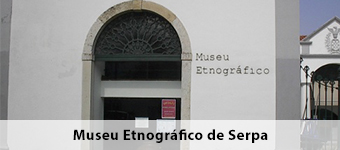
Vidigueira
Vidigueira is a village in the district of Beja and as county seat generates 4 parishes, Pedrógão; Selmes; Vidigueira; Vila de Frades. Vidigueira is limited by Portel north, east by Moura, Serpa for the southeast, south of Beja and Cuba west.
- The promote wine tourism in this region are the following: Adega Cooperativa de Vidigueira, Cuba and Alvito; Casa Agrícola HMR, S.A; Herdade do Sobroso Country House; Herdade Grande and Quinta do Quetzal – Family Estate. While the Agricultural Cooperative of Vidigueira, C.R.L promotes olivoturismo.
- Remodeled in the building of the picturesque old elementary school, stands the Municipal Museum of Vidigueira preserving the building itself memory and features two central themes in the first group presents the history of primary education in Vidigueira, since its inauguration in 1884 until 1991, when it ended its function. The second core is dedicated to the economic picture in the decades 30 and following of the region, through the vision of agriculture and industry. This ethnographic collection shows a set of objects donated by individuals, ancient craftsmen, traders, farmers and small manufacturers, who want to get to know the region of Vidigueira and the Alentejo before. Open from Tuesday to Sunday in the summer from 10h to 18h and 10h to 17h in winter; closing on Mondays and holidays.
- An elevated site, the only national monument in Vidigueira, the archaeological site of S. Cucufate, coming from Roman times, when it was installed a villa in the center of a farm, however, it is believed that it was occupied in the Middle Iron, due to the archaeological remains found, but the buildings from Roman times clearly marked this location. In the Muslim period, between the century X or XI, here it was built a community of friars, being its patron St. Cucufate. The building built for his worship was found in ruins but still with architectural marks of his time as a Christian temple, including mural paintings in the ruins of their patron. After this villa has been classified as a National Monument, IPPAR created the Museum Centre in Arch House. The temple of the friars in this space was transformed into a monastery with Christianity. This villa can be visited from Tuesday to Sunday in the summer from 9 am to 12h90 and from 14h to 17h30 and in the winter 10h to 13h and 15h to 19h. Is not open for business on Monday and holidays January 1st, 6th Good Friday, Easter Sunday, May 1st and December 25th.
- Until the mid-nineteenth century, the building of the Arch House will have served as residence for a wealthy Alentejo family of Souto Maior name and before Core Museológico outside a male prison, which left marks as the railing that windows Downstairs present, being the image of the architectural ensemble of the town. Between 1935 and 1937, it worked in this place the delegation of the Portuguese Youth, and after 50 years it was leased to the “direction of the High Society”, a place for celebrations and gatherings of people. It is currently assigned to the Ministry of Culture, which promoted works of adaptations and improvements to install a permanent exhibition of D. Cucufate villa, where they are the most representative materials gathered from the excavations. They are organized by topics, from the activities of the daily life of its people to the religious aspects, as the exhibition aims to show the picture of the day-to-day of a farm in Roman times redirecting for used objects, to men and women who inhabited those places. It is open from Wednesday afternoon until Sunday das10h00 to 12h30 and from 14h30 to 17h30. Closed on Monday, Tuesday morning and holidays.
